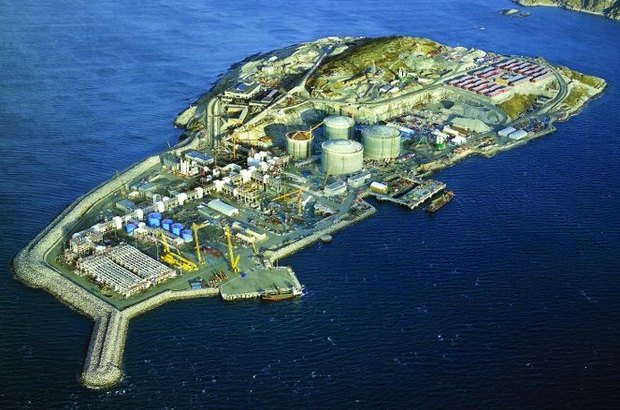
What guarantees for the future? Here Melkøya in Hammerfest. Photo:StatoilHydro
Mr. Støre's presentation was given just after Russia had once again sought to restrict the supply of gas to a neighbouring country. It was clear for all to see the disadvantages attached to the European Union's continuing reliance on an external country like Russia for its energy supplies. 'Little' Norway could never use energy as a political tool like the big brother in the East, he implied.
Mr. Støre used the occasion of the 'Open Days of the European Regions' to present his message to an audience of at least 300 well-informed listeners. European Commission President José Manuel Barroso was also there to comment on the statement of the Norwegian Foreign Minister. He reacted very positively to what he heard and talked warmly about a joint future. In fact, in February this year, Barroso himself visited Norway and invited further close cooperation between this non-Union member country and the European Commission, with the goal of further developing the supply of oil and gas from the High North to central Europe.
Even before this, the Norwegian oil-and gas-company Statoil, now StatoilHydro, began the most expensive industrial development ever in Northern Norway, namely the production of Liquid Natural Gas (LNG) from the Snøhvit field deep below the Barents Sea. Via tubes on the seabed the gas is brought ashore at Melkøya in the harbour of the small Norwegian town of Hammerfest. What used to be a rocky island has been ´planed' downed into a large plateau upon which huge storage tanks, processing equipment and quays have been built.
Total investment here has been approximately 60 billion NOK. On the one hand this must be recognised as a really significant investment while on the other, the number of permanent jobs will not be all that sizeable. In fact only around 300 people will work directly in the LNG-processing plant, more or less the same number as are engaged in the fisheries sector in the municipality.
For people living in sparsely populated areas like Hammerfest future job security is of the utmost importance. However, perhaps more than anything else here, the lesson of history is that there are no guarantees even if the resources are more or less just outside your door. Much of the production of oil and gas in the North Sea is offshore, and with further technological developments this can also become the case for the High North. The mayor of Vardø Rolf E. Mortensen (see p. 7) has long observed the economic vagaries of such developments and will therefore not bet the future of ´his' town on oil and gas exploration.
Many people in Finnmark also use fish as an example for this type of development: – What we have learned is that control of the fish resources off the coast of Finnmark has over the years been taken away from us by large companies with international operations. In addition, fish quotas regulated by the Norwegian state have undoubtedly worked more to the benefit of the large trawlers than to the local inhabitants. In terms of jobs and opportunities therefore small costal communities have been the losers, they argue.
Classic notions of state sovereignty cannot adequately address the issue of the sovereignty of peoples, argues Rasmus Ole Rasmussen in his article debating the future role of the EU in the Arctic (see p. 23). Similarly Anita Dey Nuttall and Mark Nuttall ask if the Arctic states' new Arctic policies are heading towards the exclusion of indigenous peoples (see p. 29).
Increasingly, the international media is now carrying articles about the huge store of "untapped" resources in the Arctic. In late July for example the BBC told us that the US Geological Survey (USGS) had estimated that the Arctic holds 13% of the undiscovered oil, 20% of equivalent natural gas liquids and no less than 30% of the remaining gas in the world.
The regional impact of oil and gas in the High North is becoming increasingly significant though seasoned observers would be excused for thinking that this is something of a déjà vu moment. In the 'high North' there are never enough resources waiting for exploitation and, given the costs of exploitation, local control will always be problematic. Addressing these issues is perhaps the ultimate future challenge for the Arctic.
Odd Iglebaek, Editor